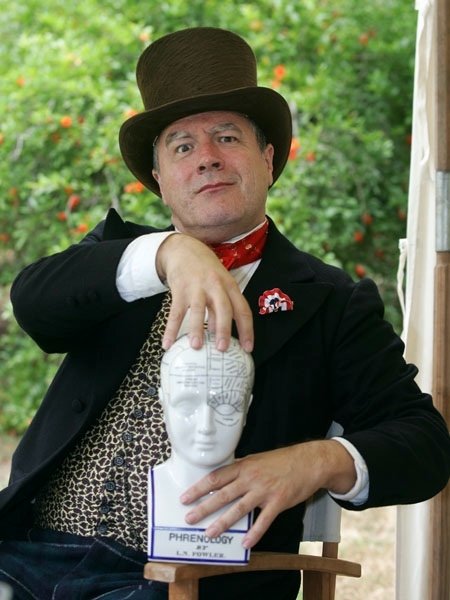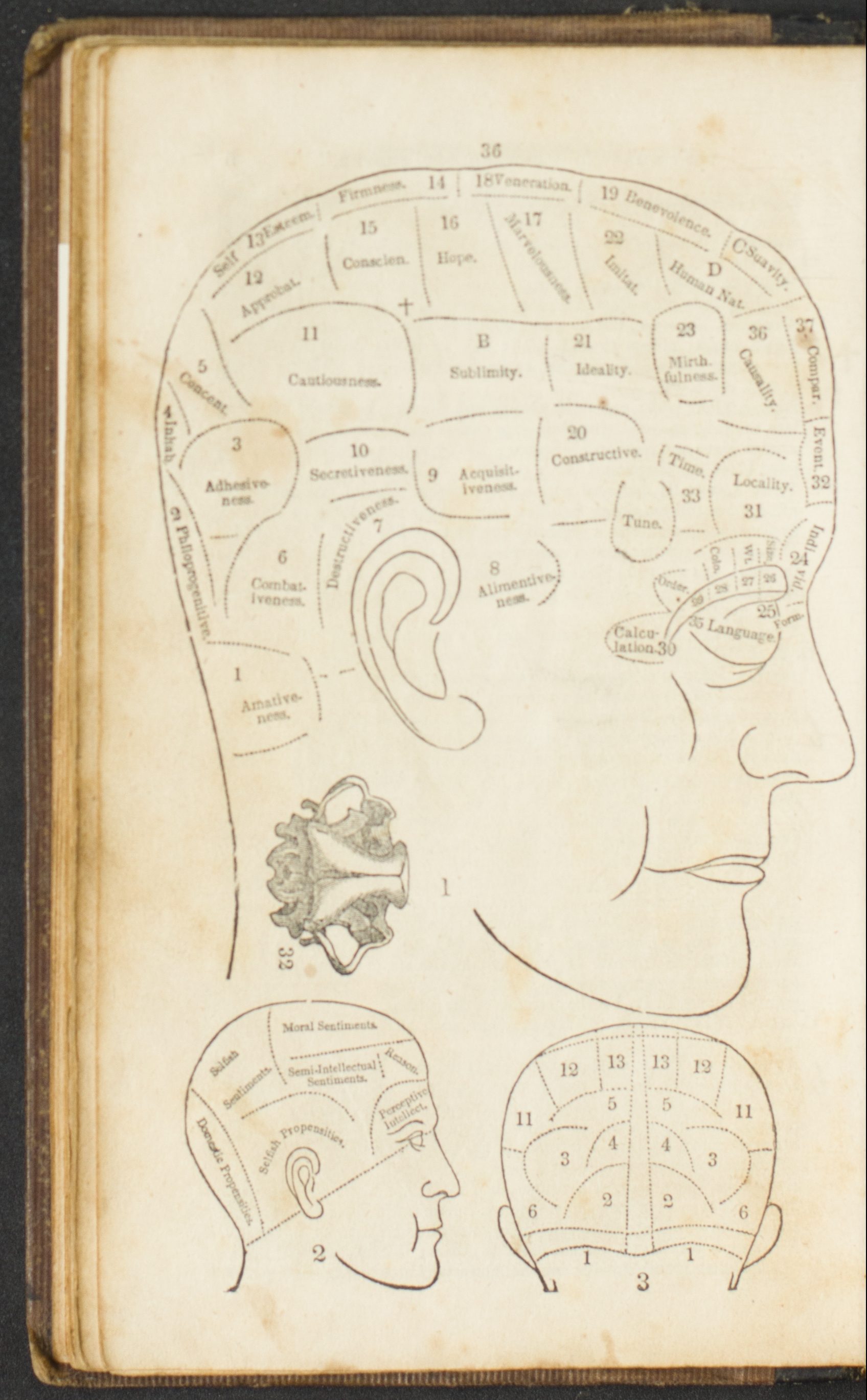Walter Nelson presents "Doctor Malatesta, Frontier Phrenologist: Bringing the blessings of science to the howling wilderness"

Phrenology, the one true science of mankind!
This is a high energy, well-researched public program, running roughly one hour. Walter Nelson, in historical costume and portraying a 19th Century American phrenologist, begins the program in character and presents an, at times humorous but historically accurate explanation of the science of phrenology from the point of view of a 19th Century practitioner. This is often followed by a live phrenological reading of a volunteer from the audience.
Following this, Walter drops character and fills in the background that a person of the time would not know or not admit, regarding the pseudoscience of phrenology.
He discusses its impacts on scientific thought, and its immense popularity and influence. He also addresses the scientific fallacies that sustained it for so long, and its darker side, including its deeply racist foundations and applications.
Walter has been performing this program in multiple locations (historic sites, museums, libraries) for over twenty years.
Please contact Walter Nelson to discuss availability, pricing, tailoring the program to your particular needs and to answer any of your questions. Walter is based in Los Angeles County, in the San Fernando Valley.
Here's a link to a newspaper story about one of Walter's programs in 2003
If you want to know more about phrenology, and the program Walter will present, keep reading.
Phrenology: the science of picking the pocket through the scalp - Ambrose Bierce

What is Phrenology?
Phrenology is a now-discredited scientific discipline that theorizes that the brain, which is the sole organ of thought and consciousness, is made up of sub-organs called "Phrenological Organs". Each of these organs controls a different aspect of personality such as Benevolence, Secretiveness, Phyloprogenitiveness (the sex urge, the urge to reproduce) and many, many more. Like the muscles in the body, the stronger the organ, the larger it would be and the smaller, the weaker. Phrenologists believed that this landscape of enlarged and shrunken organs would imprint themselves on the cranium, with the larger ones manifesting as bumps and the smaller as concavities. Therefore, a trained professional could, by feeling the surface of the skull and taking detailed measurements, build a picture of the mind of the subject: their strengths, weaknesses, and personal attributes.
The "science" was extremely popular from its foundation at the end of the 18th Century, spreading through Europe and thus to the United States. For the first forty years of so of the 19th Century, it was broadly accepted as settled science, but as more rigorous scientific practices took hold, its obvious flaws came to light. By the middle years of the century, it was largely rejected by the mainstream scientific community, but its hold on the popular imagination was undiminished.
Through some very intense confirmation bias, phrenological societies continued to espouse and "research" the science, and traveling phrenologists wandered the country doing readings and feeding the demand people felt for a scientific way of understanding themselves and others. By understanding their true natures, they could choose paths most likely to bring happiness and satisfaction, and avoid those most likely to end in failure, despair and ruin.
Authors of the time often mentioned it, such as Fezziwig's "Organ of Benevolence" in Dickens' Christmas Carol. Sherlock Holmes was a phrenologist, and Poe referenced phrenological organs in describing characters.
Students would have phrenological readings to plan their course of instruction (or determine if they were teachable at all), employers would have phrenological readings of job seekers and marriage prospects would have phrenological readings done of their intendeds. Phrenology, despite being widely discredited by the scientific community, still had an unbreakable hold on the popular imagination well into the 20th Century.
For all its faults, phrenology had a significant impact on the development of science. Its first contribution was the, at the time, heretical notion that the mind and the body were deeply intertwined: the mind wasn't simply a soul riding around in a body. Human beings and human minds were subject to the same scientific analysis as any other living thing. This helped prepare the ground for Darwin a few decades later.
This contributed to a general acceptance of the whole notion of science, and of scientists making inroads into understanding the human condition. Mary Shelley's Frankenstein was written in a world that was just starting to come to grips with the concept of science, and the widespread acceptance of phrenology aided that.
Psychology started as phrenology, and then as its practice focused on therapies beyond simple self-discovery, and moved on to more scientific rigor and research, they left the skull fondling behind to begin evolving into what we have today.
Indeed, the underlying premise that the brain is composed of regions, and different regions control different aspects of human functioning, is valid and now well established. Phrenology got the general notion right. However, their map of the brain was almost completely wrong, and their notion of being able to gain relevant information from bumps on the head, was completely wrong.
However, on the darker side, phrenology with its tendency to confirmation bias strongly reflected and reinforced the racial prejudices of the day, with the attributes associated with negative stereotypes of racial groups assigned to anatomical details typical of those groups. Phrenology was offered as proof of the inferiority of what were thought to be the inferior races. The Nazis embraced phrenology.
In the end, phrenology has a mixed record in terms of its contribution to our modern world. It was completely wrong in most of its specifics, but nevertheless contributed greatly to a tacit acceptance of the notion that human beings are as subject to scientific study as any other living thing, and the practice of scientific research was advanced by those who began by studying phrenology, then uncovered its failings, and then contributed to creating better methods of research that became the modern scientific method.
